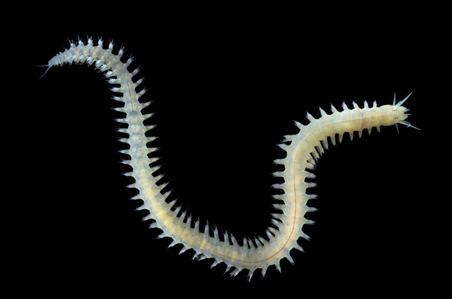General Description
In members of this genus paragnaths are generally present in most areas of the eversible pharynx; Area VI has cones only (no bars, as are present in Perinereis spp). Notochaetae are only spinigers (short-bladed chaetae are absent from the dorsal bundle of chaetae, and simple chaetae with fused articulation are absent ventrally). This species can be distinguished from the other common local on sheltered rocky shores by having a circular cluster of conical paragnaths on either side of the dorsal part of the eversible pharynx (Area VI). A somewhat similar and equally common species Perinereis vallata occurs here, but in that species Area VI has a pair of rows of short bars arranged in two long arcs. Body up to about 5 cm long.
Biology
One of the most common Nereididae species on sheltered coasts in a variety of habitats, wherever algae occur.
Habitat
Rocky shores on sheltered coasts, in algal turf, among mussels, and similar substrates. Usually intertidal, occasionally to depeth of 10 m or more.
Coastal shores
Reefs
Seagrass meadows
Distribution guide
South-eastern Australia, or south-western Australia.
Species Group
Depth
Shore (0-1 m)
Shallow (1-30 m)
Water Column
Max Size
5 cm
Commercial Species
No
Species Code
MoV 1069
Identify
Conservation Status
- DSE Advisory List : Not listed
- EPBC Act 1999 : Not listed
- IUCN Red List : Not listed




